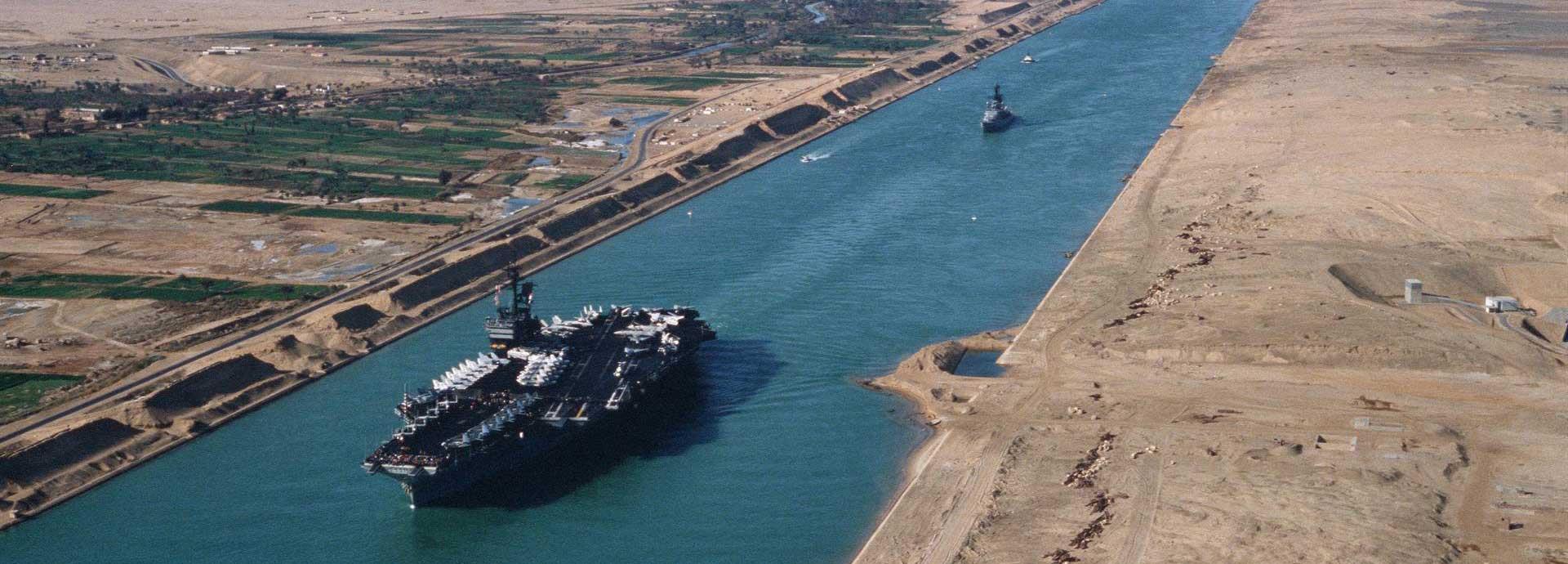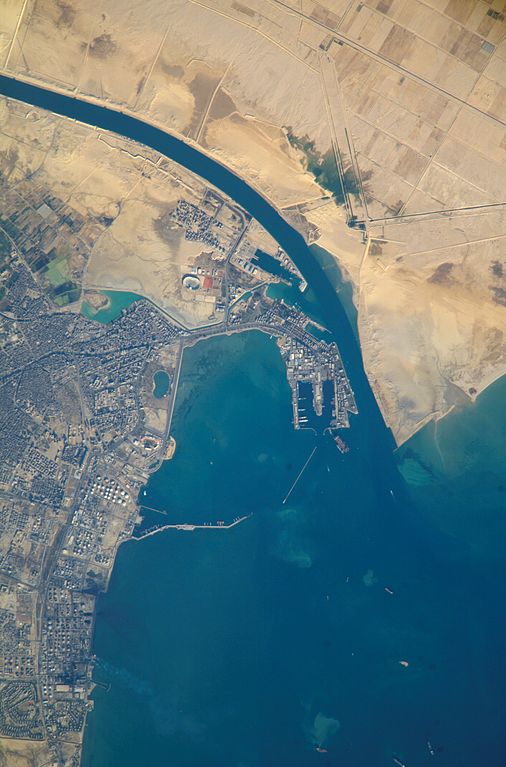

Suez Canal pilots are adept at handling pilotage in very constricted waters under challenging external conditions. These pilots are responsible for manoeuvring some of the biggest ships in the world through one of its busiest shipping channels. They also need to be familiar with the complex effects of water pressure in a relatively shallow and narrow stretch of water, ‘squat effect’ (potentially sucking a vessel lower in the water), ‘bank effect’, and vessel to vessel interactions as vessels pass in the waterway.

Image source: Wikimedia
Preparing more than 300 canal pilots and tugboat masters with the skills they need to ensure safe and efficient transits is the role of the Suez Canal Authority’s (SCA) Maritime Training & Simulation Centre. The head of the facility, Eng. Sabry Nasr, explains: “There are many challenges. The increasing size of ships is one example. Wide ranging weather conditions include sandstorms that can limit visibility severely thus making the pilotage of large vessels extremely challenging. Emergency situations such as blackouts and rudder jam onboard vessels transiting the canal can be critical in the channel.”
Simulator training improves the ability of pilots and tugboat masters to take the right decision and action at the right time.
- Sabry Nasr, Head of Suez Canal Authority’s (SCA) Maritime Training & Simulation Centre
Simulator training improves the ability of pilots and tugboat masters to take the right decision and action at the right time, says Mr Nasr. And those capabilities need to evolve along with the training in the canal itself.

Image source: Wikimedia
The centre was established in 1996 and began its long partnership with Wärtsilä in 2010, when it installed a full mission bridge simulator and two tug bridge simulators. That set-up helped the authority train pilots and tug operators before the canal was extended in 2015. The following year an oil spill simulator was added, evidence of the facility’s increasing role in safeguarding operations on the canal. And in March 2020 a new navigational bridge simulator and software upgrade further updated the centre’s capabilities.
The upgrade gives a better and more realistic simulator experience.
- Kiran Kumar, Smart Marine Sales Expert, Wärtsilä Voyage
“The upgrade gives a better and more realistic simulator experience,” says Kiran Kumar, Smart Marine Sales Expert, Wärtsilä Voyage. “It also provides SCA with models of the latest container ship, bulk carrier and tanker designs so that they can replicate the bigger ships which transit in the canal. The Wärtsilä simulators which are engineered with the state of the art modelling and technological advancements can now be controlled by a combination of touchscreens and hardware panels, which gives a lot more flexibility to the Pilots.

Adaptability is essential to the future of the centre. The updated ship models expand the range of vessels that can be replicated, which is useful for training as well as for safety purposes. For example, the first time a new vessel wants to use the canal, the authority uses simulation to determine whether it is capable of safely making the transit in a variety of environmental conditions. The simulation centre recreates incidents that happen in the canal with the intention of training pilots to respond better in future. The new model database allows SCA to conduct these exercises for more modern vessels.
Model behaviour
According to Mr Kumar, creating the ship models needed by SCA was more complicated than for open sea environments. “Normally we can simply take the ships from our existing database,” he says. “In this case we needed to create different models because ships moving through the canal behave differently to those in the ocean. It was a process of on-site validation as SCA’s pilots tested new models and provided feedback. The hydrodynamics applied on these ship models leverage the Pilots to simulate the situation similar to a realistic scenario”.
The simulator upgrade is an enabler for what lies ahead and is already being used to plot the next stage in SCA’s introduction of digital systems, says Mr Nasr.

“SCA has installed and put to use the most advanced simulations available. Now we are planning to continue our digital transformation with the use of Portable Pilot Units (PPU), giving pilots instant access to many of the digital tools used in transit and manoeuvring.”
Portable units such as Wärtsilä Pilot PRO by Wärtsilä Voyage complement the pilot’s practical knowledge and experience and make it easier for pilots to get the information they need in a simple and user-friendly portable display. The Pilot PRO systems can interface with any PPU sensors so as to provide crucial navigational data that is independent or semi-independent of the ship’s sensors (e.g. GPS, Gyro, AIS, etc). Through the application, they can access navigational charts, AIS tracking and weather data as well as tools including a manoeuvring predictor and a docking mode designed to enable safe parking. The concept simplifies the pilot’s work by allowing them to monitor and control transits largely from one device, rather than using different systems on each vessel.
In a first step towards introducing portable pilot units, SCA’s Maritime Training & Simulation Centre has integrated Pilot PRO with its simulators. This step, which has been implemented for the first time ever in the Suez simulation centre, means that pilots can train on the app using the same devices they will eventually take onboard vessels.
The trialling of portable units is a good example of the progress in simulation since SCA’s facility opened its doors. From training pilots to cope with their high-pressure role, the centre is now becoming a testbed for technologies that will take pressure off the team charged with safe transit of vessels through the Suez Canal.
Related solutions
Did you like this? Subscribe to Insights updates!
Once every six weeks, you will get the top picks – the latest and the greatest pieces – from this Insights channel by email.

-(1)-min.tmb-424x424.jpg?Status=Master&Culture=en&sfvrsn=e90cae44_1)

